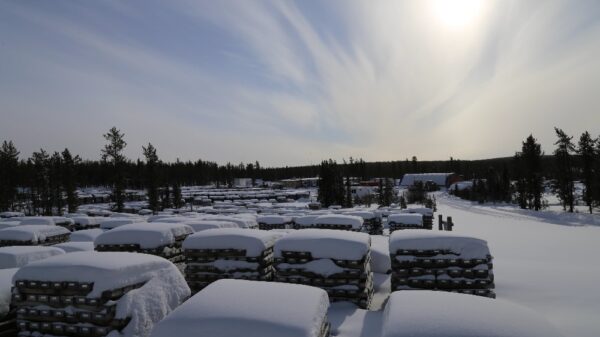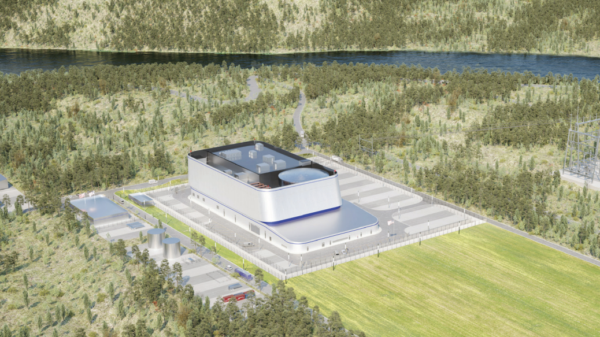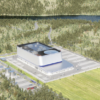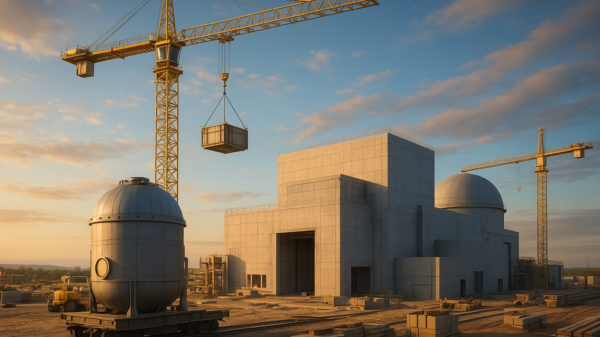The Government of Canada is investing heavily in next-generation technology to help bolster its supply of clean power.
The investment comes in two specific forms—focusing on the CANDU (CANada Deuterium Uranium) reactors presently in operation and in developing small modular reactors (SMR).
The most recent news for this comes from Canada’s energy minister, Jonathan Wilkinson, who announced on March 5, 2025, that the government would work with French Canadian firm, AtkinsRéalis (TSE: ATRL) (OTCMKTS: SNCAF), to develop the new CANDU design called the MONARK reactor.
This deal will involve taxpayers providing CAD$304 million over four years to cover 50 per cent of the project’s design overhead.
AtkinsRéalis is a global engineering and nuclear company that’s been operating since 1911. It builds a sustainable future by connecting people, data, and technology. It delivers end-to-end services across key sectors, including engineering, nuclear, and capital projects. For over a decade, the company has pioneered CANDU technology and made significant contributions to global low-carbon energy solutions.
“The federal government’s decision today to invest in the further development of CANDU technology, an evolution of the proven Darlington reactor model, will enable us to continue this important work already underway with our utility partners,” said Ian L Edwards, CEO of AtkinsRéalis.
“Advancing CANDU technology creates economic value for the country and Canadians, ensures energy security at this critical time, improves health outcomes through the creation of more cancer-fighting isotopes, builds stronger and more resilient relationships with Indigenous peoples, workers and communities, and above all, maintains Canada’s status as a Tier-1 nuclear nation.”
Read more: ATHA enters C$8M option agreement with Inspiration Energy for Saskatchewan assets
Read more: ATHA completes 92 Energy acquisition; prepares for drill program at Gemini project in Q3
CANDU reactors use Saskatchewan sourced uranium
Atomic Energy of Canada Limited (AECL), Canadian suppliers, and reactor operators are working together to modernize a technology that has powered Canada for decades.
CANDU reactors use natural uranium sourced from Saskatchewan, eliminating the need for enriched uranium. Nuclear plants consume over 99 per cent of this uranium as fuel, while research reactors and medical isotope production use less than 1 per cent.
In 2022, Canada’s uranium mines in Saskatchewan produced 7.4 kilotonnes, generating approximately CAD$1.1 billion in revenue. This production ensures a secure energy source for Canada and provides an accessible fuel supply for CANDU reactors.
Canada currently operates 17 CANDU reactors—16 in Ontario and one in New Brunswick. By replacing coal, CANDU reactors can help eliminate over 17 million tonnes of CO₂ emissions annually, supporting net-zero integration.
“CANDU reactors maintain an almost entirely Canadian-made, Canadian-designed supply chain through a consortium of Canadian companies, and they provide good-paying, long-lasting, and sustainable jobs in manufacturing for Canadians,” said Minister Wilkinson.
The technology has been spread out to multiple different countries. Countries such as South Korea, China, Argentina, and Romania use CANDU technology.
Demand for CANDU reactors continues to rise. In late 2024, Romania announced plans to purchase two additional units for its Cernavoda nuclear site.
The CANDU supply chain drives economic growth by sourcing 85 per cent of its components from domestic companies. This reliance supports 89,000 high-quality jobs in manufacturing and engineering. In 2024, AtkinsRéalis hired over 750 new employees for Candu Energy Inc. and placed more than CAD$1 billion in orders with Canadian suppliers.
Read more: Westinghouse Electric Company inks deal to provide UK first privately-financed SMR fleet
Read more: World SMR pipeline expands by 65% since 2021; uranium supply challenges persist
SMRs generate electricity on a smaller scale
Canada is investing in small modular reactors (SMRs) to diversify its nuclear energy options.
SMRs are compact nuclear reactors designed to generate electricity on a smaller scale than traditional reactors.
Typically producing between 50 to 300 megawatts, SMRs offer flexible, scalable energy solutions for communities or industries that need reliable power without the extensive infrastructure required by larger plants.
SMRs use nuclear fission to produce heat, which is then used to generate steam that drives turbines to produce electricity.
Their modular design allows for factory assembly, reducing construction time and costs. SMRs also offer enhanced safety features, such as passive cooling systems that require no external power source to operate in emergencies.
The Government’s press release also highlighted that Minister Wilkinson announced CAD$55 million in funding from Environment and Climate Change Canada’s Future Electricity Fund (FEF) to support Ontario Power Generation’s Darlington New Nuclear Project.
This project will install three GE Hitachi BWRX-300 SMRs at Darlington, with each unit producing 300 megawatts—enough to power 900,000 homes.
Saskatchewan is advancing its SMR deployment plans. The federal government increased funding for SaskPower’s pre-development work from CAD$24 million to CAD$80 million.
Wilkinson also announced a $52.4 million investment in SMRs and CANDU reactors, including decarbonization strategies in Saskatchewan, Alberta, and Ontario.
The investment allocates CAD$11.4 million from the Enabling SMRs Program for three projects. It also includes $41 million under NRCan’s Electricity Predevelopment Program for four projects.
Read more: Department of Energy inks deal with six companies for low-enriched uranium
Read more: F3 Uranium finds high radioactivity during summer drilling campaign in Saskatchewan
CANDU project could increase Canada GDP
This investment reflects Canada’s commitment to partnering with businesses, utilities, and system operators to expand clean energy. The government aims to strengthen its nuclear policy and position Canada as a leading global energy provider.
Investing in nuclear power offers significant economic benefits. The Conference Board of Canada reports that a four-reactor CANDU project could increase Canada’s GDP by CAD$50 billion and generate CAD$29 billion in tax revenue. Additionally, building these reactors could create over 20,000 full-time jobs and about 3,500 permanent jobs for more than 70 years.
Nuclear energy is vital to Canada’s goal of achieving net-zero emissions by 2050. Unlike fossil fuels, CANDU reactors and SMRs produce zero emissions.
Expanding nuclear capacity will provide direct environmental benefits, such as offering a clean and reliable power source, helping replace coal and natural gas plants, and reducing greenhouse gas emissions while ensuring a stable electricity supply.
With strong government support and increasing investment, nuclear energy has a promising future in Canada. It will play a key role in reducing emissions by 45–50 per cent below 2005 levels by 2035.
.
joseph@mugglehead.com














